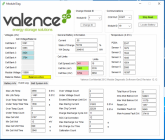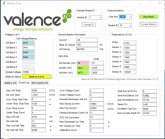I can tell you've paid good attention to the details and you are correct to assume that there's no need to worry. I repeat there's no need to worry about the 50MV difference.
One thing to remember about the 14.6 volt charger is that if you are charging a battery thats severely out of balance it will overpower the bleed off resistor and drive one cell over-voltage so if You're balancing a battery for the first time you should pay close attention and probably use the lower voltage charger for that purpose. Any cell above 3.43 is pretty much full and the same state of charge as a cell that's at 3.8. if in doubt just look at the state of charge meter it will not jump to 100% until it is truly balanced.
Thanks Travis! This does ease my mind. To think I was going to grab a bench charger to pull that cell up those few mv. I think your reply will keep my OCD at Bay.
Only other thing I've noticed that I haven't seen here on the forums:
Most batteries I have keep communication, some show the pink communication lost, and a few show the pink comm lost with a periodical flash of their firmware date and version. The last being one I've never seen mentioned here, has anyone experienced this?
None of these anomalies appear to impede charging or use thus far.
Thanks





